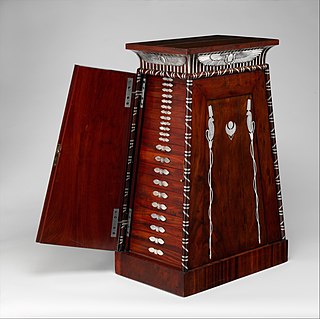 W
WEgypt has had a legendary image in the Western world through the Greek and Hebrew traditions. Egypt was already ancient to outsiders, and the idea of Egypt has continued to be at least as influential in the history of ideas as the actual historical Egypt itself. All Egyptian culture was transmitted to Roman and post-Roman European culture through the lens of Hellenistic conceptions of it, until the decipherment of Egyptian hieroglyphics by Jean-François Champollion in the 1820s rendered Egyptian texts legible, finally enabling an understanding of Egypt as the Egyptians themselves understood it.
 W
WEgyptomania was the renewed interest of Europeans and Americans in ancient Egypt during the nineteenth century as a result of Napoleon's Egyptian Campaign. During Napoleon's campaign, he was accompanied by many scientists and scholars which led to a large interest after the documentation of ancient monuments in Egypt. The ancient remains had never been so thoroughly documented before and thus, the interest in ancient Egypt increased significantly. Jean-François Champollion deciphered the ancient hieroglyphs in 1822 by using the Rosetta Stone that was recovered by French troops in 1799 which began the study of scientific Egyptology.
 W
WEgyptian revival decorative arts is a style in Western art, mainly of the early nineteenth century, in which Egyptian motifs were applied to a wide variety of decorative arts objects.
 W
W"Lot No. 249" is a Gothic horror short story by British writer Arthur Conan Doyle, first published in Harper's Magazine in 1892. The story tells of a University of Oxford athlete named Abercrombie Smith who notices a strange series of events surrounding Edward Bellingham, an Egyptology student who owns many ancient Egyptian artefacts, including a mummy. After seeing his mummy disappear and reappear, and two instances of Bellingham's enemies getting attacked, Smith concludes that Bellingham is reanimating his mummy. Smith confronts Bellingham, who denies this is the case; the next day, Smith is attacked by the mummy and escapes. Smith then forces Bellingham to destroy his mummy and the associated artefacts at gunpoint.
 W
WThe mysteries of Isis were religious initiation rites performed in the cult of the goddess Isis in the Greco-Roman world. They were modeled on other mystery rites, particularly the Eleusinian mysteries in honor of the Greek goddesses Demeter and Persephone, and originated sometime between the third century BCE and the second century CE. The mysteries alluded to beliefs from ancient Egyptian religion, in which the worship of Isis arose. By undergoing the mystery rites, initiates signaled their dedication to Isis, although they were not required to worship her exclusively. The rites may have been thought to guarantee that the initiate's soul, with the goddess's help, would continue after death into a blissful afterlife. Although Isis was worshipped across the Greco-Roman world, the mystery rites may only have been practiced in a few regions, such as Italy and Greece. In areas where they were practiced, they served to strengthen devotees' commitment to the Isis cult, and devotees may have risen in the cult's hierarchy by undergoing initiation.
 W
WOedipus Aegyptiacus is Athanasius Kircher's supreme work of Egyptology.
 W
WThe Sphinx is a 174-line poem by Oscar Wilde, written from the point of view of a young man who questions the Sphinx in lurid detail on the history of her sexual adventures, before finally renouncing her attractions and turning to his crucifix. It was written over a period of twenty years, stretching from Wilde's years as an Oxford student up to the poem's publication in an édition de luxe in 1894. The Sphinx drew on a wide range of sources, both ancient and modern, but particularly on various works of the French Decadent movement. Though at first coldly received by critics it is now generally recognized as Wilde's finest Decadent poem, and has been described as "unrivalled: a quintessential piece of fin-de-siècle art".